Explore Chiang Rai - Thailand Travel, Asia
Welcome to Chiang Rai, a captivating destination in Northern Thailand that promises a blend of history, culture, and stunning natural beauty. Known for its unique temples, lush landscapes, and vibrant local culture, Chiang Rai offers travelers an immersive experience away from the bustling tourist crowds of Bangkok. Its strategic location near the borders of Laos and Myanmar adds a touch of international allure as this city serves as a cultural and historical hub, reflecting the rich heritage of the Lanna Kingdom and offering a glimpse into traditional Thai life. Dive into Chiang Rai’s diverse attractions, and discover why it’s a must-visit destination for anyone exploring Northern Thailand.
Population: Approximately 70,000 in 2012.
Economy: Chiang Rai's economy thrives on agriculture, tourism, and trade. Known for tea, coffee, and fruit production, it also attracts visitors to its cultural landmarks and natural beauty, boosting local businesses.
Landmarks: Famous for the Wat Rong Khun (or the White Temple), Wat Phra Kaew, and Baan Dam Museum.
Thailand
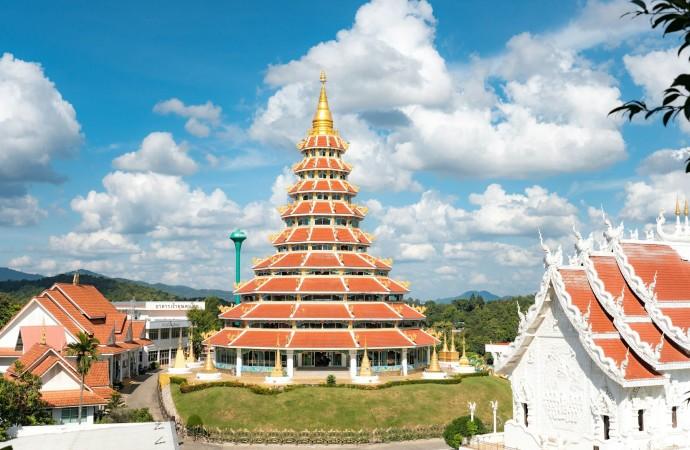
Overview of Chiang Rai
History & Cultural Influence
Chiang Rai's history is deeply intertwined with the legacy of the Lanna Kingdom, a powerful state that once ruled over Northern Thailand. This rich historical backdrop is evident in the city's numerous ancient temples and cultural landmarks. One of the most iconic sites is the Wat Rong Khun, also known as the White Temple, a stunning example of modern Buddhist architecture, combining traditional elements with a unique artistic vision. Its sparkling white facade symbolizes purity, and its intricate decorations tell profound spiritual stories. The city's historical and cultural attractions provide a glimpse into its history, highlighting the exquisite craftsmanship and spiritual traditions that have helped form its character.
Interaction with The Locals
The city's diverse demographic includes Thai locals as well as ethnic minorities such as the Akha, Lisu, and Karen. Chiang Rai residents are well-known for their friendliness and warmth, which adds to the city's pleasant vibe. This blend of cultures and traditions enriches Chiang Rai's vibrant community, making it a unique destination for travelers seeking an authentic Thai experience.
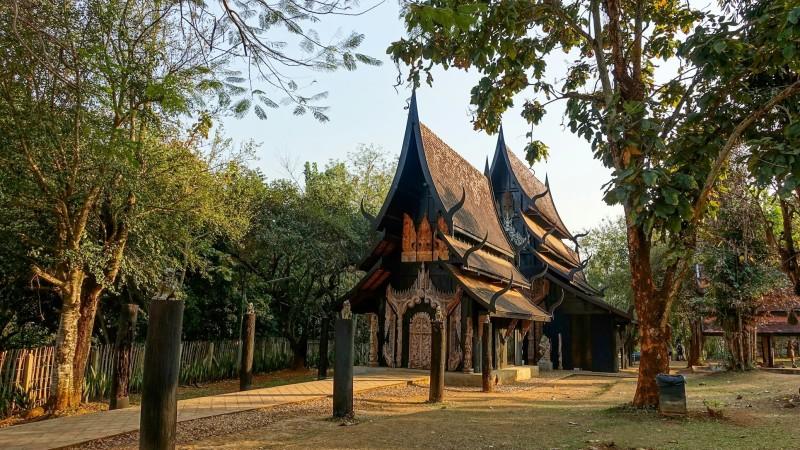
Baan Dam Museum (Black House) - © Peter Border
Top Attractions in Chiang Rai
Chiang Rai boasts an array of attractions that highlight its cultural and natural beauty. Each of these attractions offers a unique glimpse into Chiang Rai’s diverse heritage and natural splendor, making them essential stops on your journey through this enchanting city.
- Wat Rong Khun (White Temple): This surreal, all-white temple is a masterpiece of modern Buddhist art. Its intricate designs and reflective surfaces create a striking contrast against the surrounding landscape. Designed by Chalermchai Kositpipat, the temple blends traditional Thai elements with contemporary artistic interpretations, making it a must-visit for art and architecture enthusiasts.
- Wat Phra Kaew: Known for its historical significance, this temple was once home to the Emerald Buddha, Thailand’s most revered Buddhist artifact. Although the Emerald Buddha is now housed in Bangkok, Wat Phra Kaew remains an important historical and cultural site, showcasing ancient Lanna architecture and artistry.
- Golden Triangle: Located at the confluence of the Mekong and Ruak rivers, the Golden Triangle is a region rich in history and natural beauty. This area marks the meeting point of Thailand, Laos, and Myanmar, and offers stunning river views and insights into the region’s historical opium trade.
- Baan Dam Museum (Black House): Created by artist Thawan Duchanee, this museum is a collection of dark, eclectic buildings showcasing art and artifacts that reflect the artist’s unique vision and cultural heritage. It contrasts starkly with the White Temple, offering a different perspective on Thai artistic expression.
- Doi Tung Royal Villa: Set amidst lush gardens and mountainous landscapes, this royal villa was once the residence of the late Princess Mother, Srinagarindra. The villa and its gardens are a testament to her efforts in promoting sustainable development and agricultural improvement in the region.
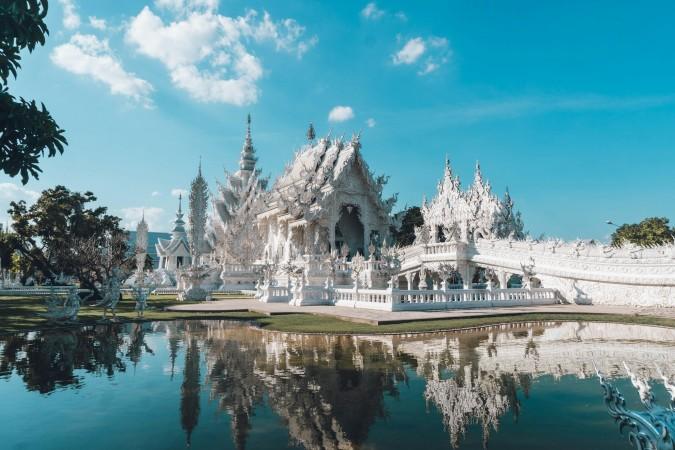
Wat Rong Khun (White Temple) - © Aleksandra B.
Must-Try Dishes in Chiang Rai
Chiang Rai's culinary tradition is a feast for the senses, showcasing a variety of dishes that reflect the region's rich cultural heritage.
- Khao Soi: This Northern Thai specialty is a creamy curry noodle soup with a delightful mix of crispy and soft egg noodles. The rich, aromatic broth is made from a blend of spices and is typically topped with pickled mustard greens, shallots, and lime. It’s a flavorful and comforting dish that captures the essence of Northern Thai cuisine.
- Sai Oua: A traditional herb-infused sausage, Sai Oua is made with minced pork mixed with garlic, lemongrass, and a variety of spices. Grilled to perfection, this savory sausage is often enjoyed with sticky rice and fresh vegetables, offering a burst of flavors.
- Nam Prik Ong: This tangy chili dip combines minced pork, tomatoes, and chili peppers, creating a rich and spicy flavor. Served with fresh vegetables and sticky rice, Nam Prik Ong is a beloved dish in Northern Thailand and a great way to experience local tastes.
- Sticky Rice with Mango: A popular Thai dessert, this dish pairs sweet, fragrant mango with sticky rice cooked in coconut milk. The end product is a delicious blend of sweetness and creaminess, making it a welcome finish to any meal.
- Khao Niew Mamuang: Another variation of sticky rice, this dessert features sweet coconut-flavored rice paired with ripe mango slices. Often enjoyed during mango season, it’s a simple yet satisfying treat.
- Gaeng Hang Lay: Gaeng Hang Lay is a thick, spicy Northern Thai curry with Burmese influences that features pork belly, ginger, and tamarind. The curry is known for its deep, complex flavors and is often served with rice.
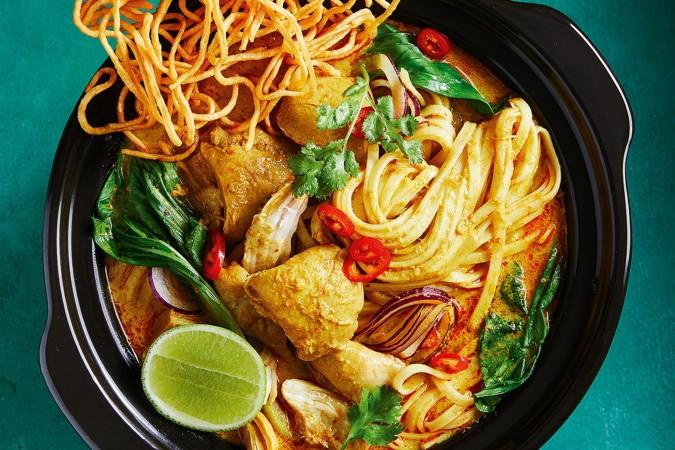
Khao Soi - © Taste
Festivals & Local Celebrations
Chiang Rai is a city brimming with vibrant festivals and local celebrations that highlight its rich cultural heritage and community spirit. These events provide a unique glimpse into the traditions and customs of Northern Thailand.
Songkran Festival (Thai New Year)
Held every April, Songkran marks the Thai New Year with a grand celebration that involves splashing water. Originating as a traditional way to wash away the old year and welcome the new, Songkran in Chiang Rai transforms into a lively water festival. Streets are filled with revelers armed with water guns and buckets, creating an exhilarating and festive atmosphere. The celebration also includes religious ceremonies, such as pouring water over Buddha statues and visiting temples to seek blessings.
Chiang Rai Flower Festival
The Chiang Rai Flower Festival, held in January, is a visual feast for nature enthusiasts. This annual event showcases the region’s floral diversity, with vibrant displays of blooming flowers, intricate garden designs, and landscape art. The festival features flower parades, garden exhibitions, and cultural performances, making it a perfect opportunity to experience Chiang Rai’s natural beauty and artistic flair. Visitors can stroll through beautifully arranged floral displays and enjoy a variety of local food and crafts.
Loy Krathong Festival
Loy Krathong, which takes place in November, is one of Thailand's most magical celebrations. The festival involves floating decorated baskets, or “krathongs,” onto rivers and lakes. These krathongs, often made of banana leaves and adorned with flowers, candles, and incense, symbolize letting go of past grievances and making wishes for the future. In Chiang Rai, the festival is marked by beautiful river ceremonies and lantern releases, creating a magical atmosphere with thousands of glowing lights reflecting on the water.
Boon Bang Fai Festival
Known as the Rocket Festival, Boon Bang Fai is celebrated in the rural areas around Chiang Rai in May. This unique festival involves launching homemade rockets into the sky as a way to encourage rainfall for the upcoming rice planting season. The festival is marked by colorful parades, traditional music and dance performances, and communal feasting. It’s a lively event that reflects the agricultural traditions and community spirit of the region.
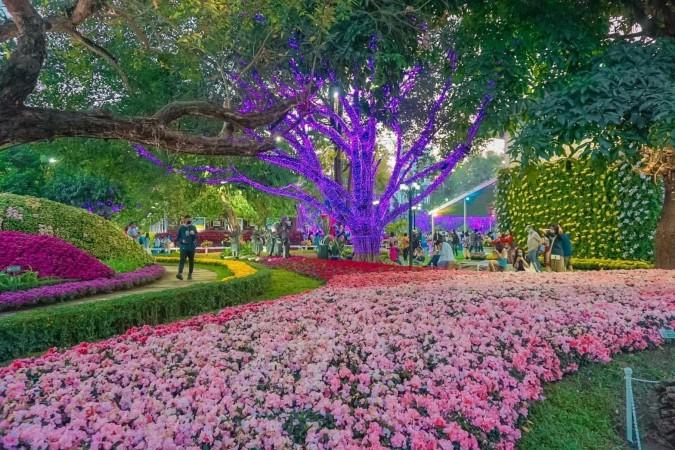
Chiang Rai Flower Festival - © Richard Barrow
What to Do in Chiang Rai
Chiang Rai offers a range of activities that cater to diverse interests, ensuring a memorable visit.
- Jungle Trekking in Chiang Rai: Explore the lush landscapes surrounding Chiang Rai through guided jungle treks and nature tours. These excursions offer opportunities to observe diverse wildlife, scenic waterfalls, and traditional hill tribe villages.
- Mekong River Cruises: Take a relaxing river ride down the Mekong River, which forms the boundary between Thailand, Laos, and Myanmar. The voyage provides stunning views of the countryside as well as opportunities to learn about the region's history and culture.
- Local Market Exploration: Immerse yourself in Chiang Rai’s local culture by visiting bustling markets like the Night Bazaar. Browse through handmade crafts, local produce, and delicious street food while interacting with friendly vendors.
Shopping in Chiang Rai
Chiang Rai offers an excellent shopping experience with a diverse range of marketplaces and boutiques.
- Chiang Rai Night Bazaar: This bustling market is a hub for souvenirs, local handicrafts, and street food. It’s a great place to pick up unique gifts, such as handcrafted jewelry, traditional textiles, and artisanal goods. The vibrant ambiance and numerous offers make it a must-see for shoppers.
- Central Plaza Chiang Rai: Central Plaza offers a contemporary shopping experience with a wide range of retail stores, dining options, and entertainment amenities. It’s an ideal spot for those seeking both international brands and local products in a comfortable setting.
- Local Handicraft Markets: Explore smaller markets around Chiang Rai for authentic, handcrafted items. These marketplaces frequently sell traditional Thai products, such as elaborate wood carvings, vivid fabrics, and stunning ceramics. They provide a chance to support local artisans and find one-of-a-kind treasures.
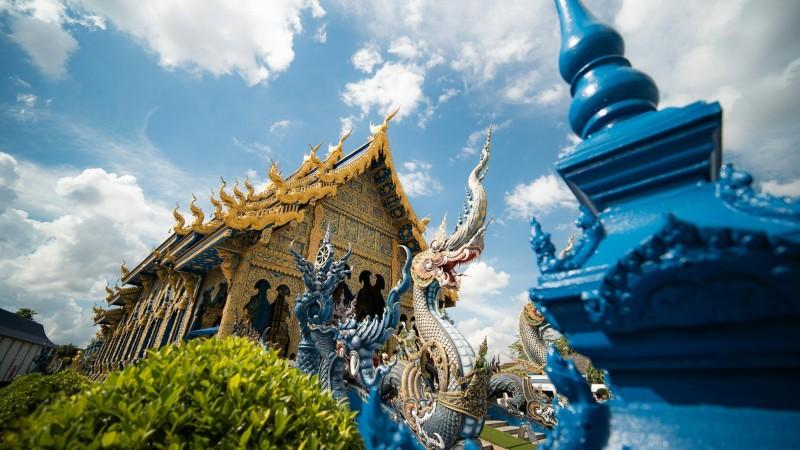
Explore Wat Rong Suea Ten (Blue Temple) - © CJ Botha
Weather in Chiang Rai: Best Time to Visit
Chiang Rai experiences a tropical climate with distinct wet and dry seasons, making it a year-round destination with varying weather patterns. Understanding the weather might help you organize your vacation to this northern beauty more successfully.
Cool Season in Chiang Rai
This is the most popular time to visit Chiang Rai, thanks to the pleasant and cool weather. Temperatures range from 15°C to 30°C (59°F to 86°F), providing comfortable conditions for sightseeing and outdoor activities. The skies are usually clear, and humidity levels are lower, making it ideal for exploring the city and its surroundings.
Hot Season in Chiang Rai
During these months, Chiang Rai has greater temperatures, which can reach 35°C (95°F). The heat can be intense, particularly in April and May, making it important to stay hydrated and use sun protection. Despite the heat, this period is less crowded, and you might find some great deals on accommodations and flights.
Rainy Season in Chiang Rai
The rainy season brings frequent showers and thunderstorms, with heavy rainfall often occurring in the afternoons and evenings. Temperatures during this period are typically between 24°C and 33°C (75°F to 91°F). While rain might hamper travel plans, it also refreshes the scenery and adds to the region's lush flora. If you don’t mind occasional downpours, this can be a good time to enjoy fewer tourists and lower prices.
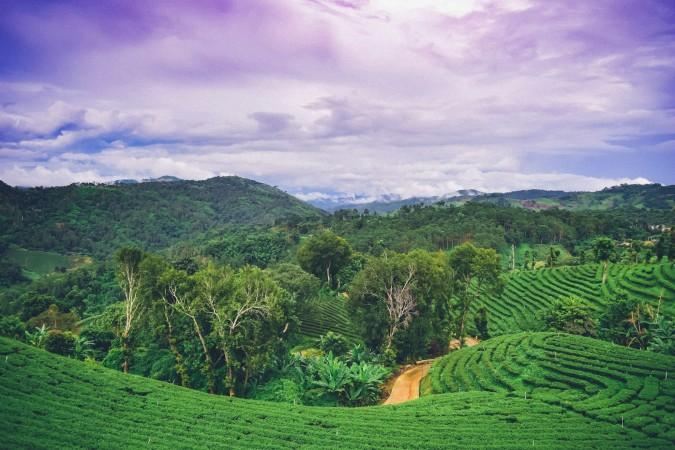
A clear day to trek in Chiang Rai - © Nopparuj Lamaikul
Essential Travel Information
Getting Around Chiang Rai
- Tuk-Tuks: These three-wheeled vehicles are a popular and fun way to explore Chiang Rai. Tuk-tuks are ideal for short distances and provide a unique local experience.
- Songthaews: These shared red trucks operate as a form of public transportation and are an affordable way to travel around the city. They follow specific routes, and passengers can hop on and off as needed. It’s a practical option for both tourists and locals.
- Bicycles and Motorbikes: Renting a bicycle or motorbike is a great way to explore Chiang Rai at your own pace. Many rental shops offer affordable rates.
- Taxis and Ride-Sharing: Taxis are available in Chiang Rai, though they may be less common than tuk-tuks and songthaews. Ride-sharing apps like Grab are also operational, offering a convenient way to book rides with fixed fares.
- Car Rentals: Renting a car provides additional freedom. This allows you to discover Chiang Rai and its surroundings at your own speed. Make sure you have an international driving permit and are familiar with the local driving rules.
ATM & Banking Services
Chiang Rai offers convenient access to banking services and ATMs throughout the city. ATMs are widely available and allow for cash withdrawals using international credit and debit cards, though transaction fees may apply. For currency exchange and additional banking needs, several branches are scattered across the city, where you’ll need to present identification, such as your passport. Currency exchange services can also be found at dedicated booths and some hotels, though rates may vary. While credit cards are accepted in many hotels, restaurants, and shops, carrying some cash is advisable for smaller establishments and local markets where card payments might not be accepted.
Where to Stay in Chiang Rai
- Luxury Hotels: For a touch of luxury, Chiang Rai boasts several high-end hotels with top-notch amenities, including Chiang Rai, which offers elegant rooms, swimming pools, and fine dining. These establishments provide a comfortable and upscale experience for travelers seeking luxury.
- Boutique Hotels: Experience a blend of charm and comfort with boutique hotels. These smaller, stylish hotels often feature unique decor and personalized service. They offer a cozy atmosphere and are typically located in central areas, making it easy to explore local attractions.
- Guesthouses and Hostels: Budget travelers will find a variety of guesthouses and hostels in Chiang Rai. These accommodations offer affordable rates and a chance to meet fellow travelers. Many guesthouses provide simple yet comfortable rooms and common areas for socializing.
- Resorts: For a tranquil escape, consider staying at one of Chiang Rai’s resorts. These properties are often located in scenic areas and offer amenities such as spas, swimming pools, and outdoor activities. Resorts provide a relaxing retreat away from the city’s hustle and bustle.
- Homestays: For a more authentic experience, homestays offer a chance to stay with local families. This choice offers a distinct perspective on Thai culture and everyday life. Homestays often include meals and personalized experiences, enhancing your cultural immersion.
Des articles pour vous

Voyage à Kampong Cham - Cambodge, Asie
Kampong Cham est une charmante ville riveraine située le long du fleuve Mékong. Connue pour son importance historique et ses attractions culturelles, Kampong Cham offre un mélange d'architecture coloniale, de temples anciens et de paysages pittoresques. Kampong Cham est reliée au district voisin de Tbong Khmum par le pont Kizuna, le premier pont au Cambodge à traverser le fleuve Mékong, en faisant un carrefour de transport crucial pour la région.
Population : Estimation de 80 000 habitants (en 2024)
Économie : Bien que n'étant pas encore une destination touristique majeure, Kampong Cham propose des sites culturels et historiques, tels que le temple Wat Nokor et le pont en bambou de Koh Pen, ainsi que des attractions naturelles comme des forêts et des chutes d'eau. Le gouvernement se concentre sur le développement du tourisme pour améliorer l'économie locale.
Points d'intérêt : Wat Nokor Bachey, Phnom Han Chey, Phnom Pros et Phnom Srey, pont en bambou de Koh Pen, Wat Joy T'maw, Preah Theat Teuk Chha, piste d'atterrissage abandonnée de l'US.

Explorez Nha Trang - Voyage au centre du Vietnam, Asie
Nichée le long de la magnifique côte du Vietnam, Nha Trang se distingue comme une destination de premier choix pour les voyageurs. Cette ville côtière, réputée pour ses superbes plages et sa vie marine foisonnante, s'adresse à tous. Nha Trang vous accueille à bras ouverts, que vous recherchiez des aventures, de la culture ou de la détente au bord de la mer. Ce guide vous fera découvrir les points forts de cet endroit magnifique, facilitant ainsi la planification de votre voyage de manière fluide et excitante.
Population : Environ 423 000 habitants en 2019.
Économie : L'un des principaux centres touristiques du Vietnam et la plus grande économie de la province de Khanh Hoa.
Sites emblématiques : Célèbre pour les tours Cham de Po Nagar, la cathédrale de Nha Trang et l'île Hon Mun.

Voyage à Sihanoukville - Cambodge, Asie
Sihanoukville, une ville côtière du sud-ouest du Cambodge, est la capitale de la province de Preah Sihanouk. Située sur une péninsule le long du golfe de Thaïlande, la ville est bien reliée à Phnom Penh par des autoroutes principales et dispose d'un aéroport international.
La ville abrite le seul port en eau profonde du Cambodge, jouant un rôle crucial dans la logistique et le commerce du pays. Les plages magnifiques de Sihanoukville, telles qu'Ochheuteal et Serendipity, attirent aussi bien les touristes nationaux qu'internationaux. Le développement économique a prospéré ces dernières années, en particulier grâce à la création de la Zone économique spéciale de Sihanoukville (SSEZ) et aux investissements chinois dans les casinos, l'immobilier et les stations balnéaires. La ville offre également des attractions naturelles telles que le parc national de Ream et plusieurs îles voisines, en faisant une destination variée pour les voyageurs d'affaires et de loisirs.
Population : La population de Sihanoukville était d'environ 160 000 habitants en 2024.
Économie : Sihanoukville, une ville côtière en pleine croissance au Cambodge, se distingue par son mélange dynamique de développement économique et de tourisme. La Zone économique spéciale de Sihanoukville (SSEZ) est devenue un pôle industriel majeur, abritant plus de 180 entreprises et créant des milliers d'emplois. Avec le seul port en eau profonde du Cambodge, la ville joue un rôle clé dans le commerce et la logistique du pays. Bien qu'elle se soit transformée d'une petite ville balnéaire tranquille en un centre urbain animé, Sihanoukville reste célèbre pour ses plages immaculées, attirant des touristes tout au long de l'année. Les investissements chinois importants ont alimenté la croissance des hôtels, des casinos et de l'immobilier, faisant de la ville un centre d'opportunités économiques et d'hospitalité.
Monuments : Plage d'Otres, Plage d'Ochheuteal, Plage de l'Indépendance, Parc national de Ream, Chute d'eau de Kbal Chhay, Monument des Lions d'Or, Wat Leu.

Explorez Kharkhorin - Voyage en Mongolie, Asie
Bienvenue à Kharkhorin, un trésor historique niché au cœur de la Mongolie. Ancienne capitale vibrante de l'Empire Mongol sous le légendaire Gengis Khan, Kharkhorin se dresse comme un témoignage de la riche culture et de l'histoire de la Mongolie. Cette ville antique possède une combinaison unique d'importance historique et de paysages époustouflants, en faisant une destination incontournable pour un voyage de rêve en Mongolie. En mettant le pied à Kharkhorin, vous ferez un saut dans le temps, à une époque de grands palais, de routes commerciales prospères et d'échanges culturels sans pareils. Que vous soyez intrigué par les ruines anciennes, désireux d'explorer les traditions locales ou simplement en quête d'une immersion dans la beauté naturelle de la Mongolie, Kharkhorin a quelque chose à offrir à chacun.
Population : Environ 1 000 habitants en 2020.
Économie : L'une des attractions touristiques les plus importantes de la Mongolie et l'ancienne capitale de l'Empire Mongol.
Monuments : Célèbre pour les Ruines de Kharkhorin, le Monastère d'Erdene Zuu, et la Vallée d'Orkhon, un site du patrimoine mondial de l'UNESCO.

Explore Luang Prabang - Laos Travel, Asia
Luang Prabang, nestled in northern Laos at the meeting point of the Mekong river and Nam Khan river, is a city celebrated for its rich cultural heritage and stunning natural beauty. Recognized as a UNESCO World Heritage Site in 1995, it boasts a unique blend of traditional Lao and French architecture that has been carefully preserved. Whether you're wandering through its ancient temples, admiring the local architecture, or soaking in the natural beauty of waterfalls and rivers, Luang Prabang offers something for everyone.
Population: Approximately 470,000 in 2020.
Economy: Luang Prabang's economy thrives on tourism, with its UNESCO status drawing visitors to its temples, natural wonders, and cultural experiences. Local crafts, hospitality, and small businesses also play vital roles, supporting the town's sustainable growth. Local crafts, hospitality, and small businesses also play vital roles, supporting the town's sustainable growth.
Landmarks: Famous for the Wat Xieng Thong, Royal Palace Museum (also known as Haw Kham), and Mount Phousi (Phou Si Hill).Luang Prabang, nestled in northern Laos at the meeting point of the Mekong river and Nam Khan river, is a city celebrated for its rich cultural heritage and stunning natural beauty. Recognized as a UNESCO World Heritage Site in 1995, it boasts a unique blend of traditional Lao and French architecture that has been carefully preserved. Whether you're wandering through its ancient temples, admiring the local architecture, or soaking in the natural beauty of waterfalls and rivers, Luang Prabang offers something for everyone.
Population: Approximately 470,000 in 2020.
Economy: Luang Prabang's economy thrives on tourism, with its UNESCO status drawing visitors to its temples, natural wonders, and cultural experiences. Local crafts, hospitality, and small businesses also play vital roles, supporting the town's sustainable growth. Local crafts, hospitality, and small businesses also play vital roles, supporting the town's sustainable growth.
Landmarks: Famous for the Wat Xieng Thong, Royal Palace Museum (also known as Haw Kham), and Mount Phousi (Phou Si Hill).

Explore Vientiane - Laos Travel, Asia
Vientiane, the capital of Laos, offers a unique travel experience for those looking to explore a peaceful Southeast Asian city with a deep connection to its cultural roots. Unlike other bustling capitals, Vientiane boasts a serene and laid-back atmosphere, making it a perfect destination for travelers wanting to escape the chaos of more crowded cities. This charming city sits along the Mekong River, offering scenic views, rich history, and a vibrant yet tranquil way of life. As a gateway to exploring Laos, this capital invites you to slow down, immerse in its heritage, and enjoy the local flavors.
Population: Approximately 840,000 in 2023.
Economy: Vientiane's economy is growing steadily, driven by government services, trade, and tourism. Key sectors include agriculture, manufacturing, and construction. The city's strategic location along the Mekong River supports trade with neighboring Thailand and Vietnam.
Landmarks: Famous for the Pha That Luang, Patuxai, and the Buddha Park (or Wat Xieng Khuan).
